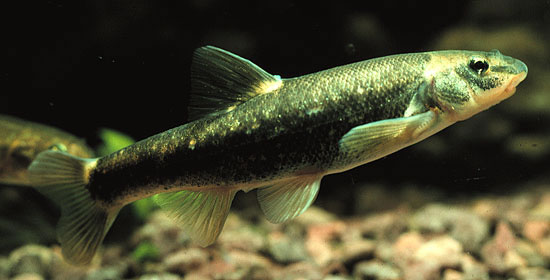Facts About Longnose dace
The longnose dace is a small freshwater fish native to North America, easily recognized by its distinctive fleshy snout that extends beyond its mouth. These minnows are perfectly adapted to life in fast-moving streams, where they feed on algae and aquatic insects. They also play a crucial role in the food web, serving as prey for larger predatory fish. Although they might be mistaken for suckers, longnose dace lack certain mouth features characteristic of suckers.
In terms of appearance, juveniles exhibit a black lateral line that fades as they mature. Adult longnose dace have dark green to black backs with striking bright orange-reddish fins and lips.
These fish are widely distributed across North America, from the Rocky Mountains to the Arctic Circle. Their broad range can be attributed to several glacial refuges that facilitated their spread. They thrive in cool waters with rocky and gravelly bottoms, often seeking refuge under rocks during the day. Longnose dace are opportunistic feeders, consuming algae, small invertebrates, and even fish scales and eggs. They are primarily nocturnal feeders, sticking to small home ranges and showing strong site fidelity.
Longnose dace reach reproductive maturity at around two years old. They spawn from May to August when water temperatures range between 14 to 19 °C. These fish exhibit a polygynandrous mating system, where males establish territories to attract multiple females. Post-spawning, parental care for the young is minimal. However, some populations face challenges due to human activities, such as exposure to estrogen-like compounds in the water, which can cause stress and adversely affect their reproductive success and long-term survival.

 United States
United States